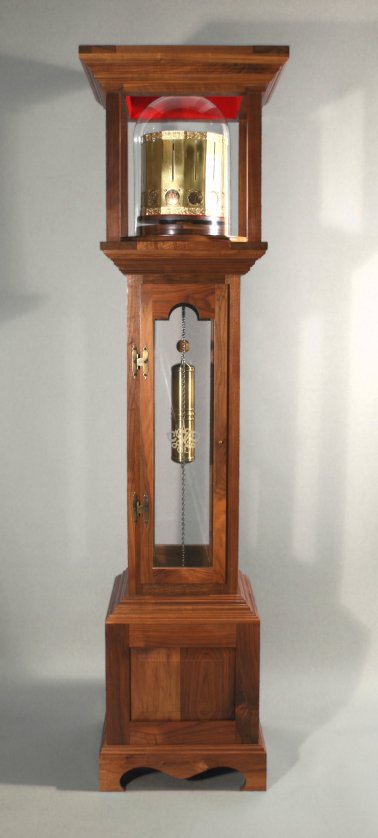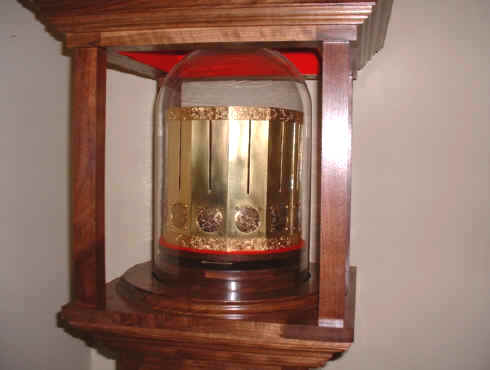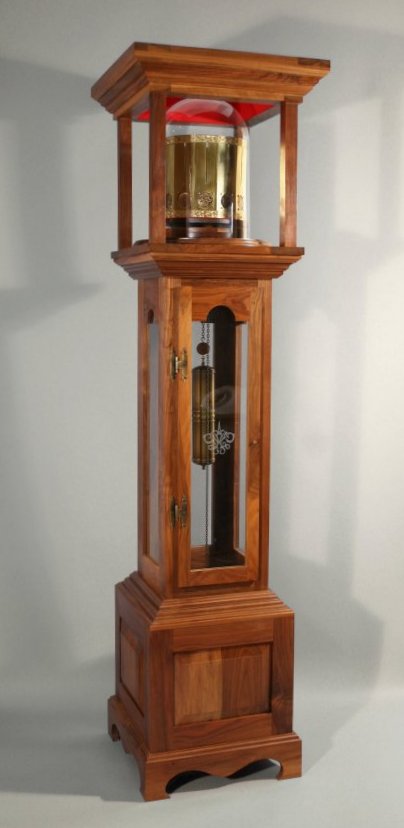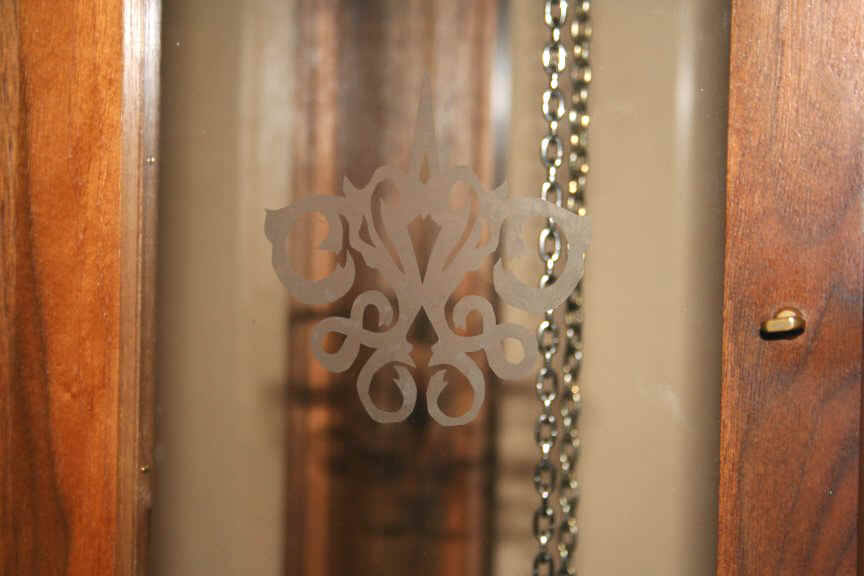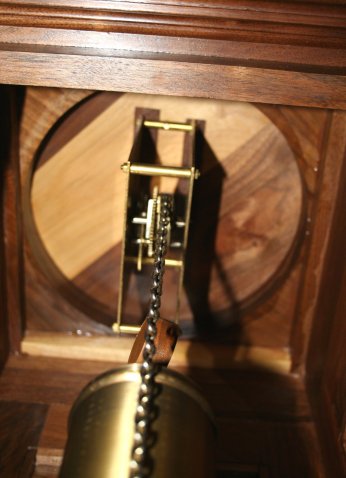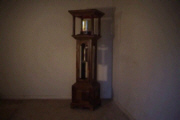|
The Time Machine: Albert in a Bell Jar72x19x19": mixed media * Award of Excellence: The American Juried Art Salon * This piece was displayed underneath an Alexander Calder Mobile for three months in an Exhibition titled "re-action" at the Annmarie Garden Sculpture Park and Arts Center, a Smithsonian affiliate, in Solomons Maryland. That was very cool! Olga Hirshhorn attended the opening reception but it was impossible to get close to her.
The Time Machine: Albert in a Bell Jar was inspired by Albert Einstein's theories of relativity, the H. G. Wells' story of the same title, and the George Pal film version of said story.
The handcrafted brass zoetrope (seen below) spins counter-clockwise and contains twelve pocket watches. Looking into the spinning zoetrope produces an image of pocket watches with there minute hands running backwards. Note: the back of each watch can be seen in the photo below as circular forms in the lower part of the zoetrope.
This piece exhibits (either literally or through illusion) the basics of Relativity. Walking around the sculpture in the direction of zoetrope rotation produces the illusion of the zoetrope rotating slowly, while walking in the opposite direction (against rotation) makes the zoetrope appear to turn very quickly. The speed of rotation is relative to the motion of the viewer. The fact that the watches contained inside the spinning zoetrope do experience time differently than a watch at rest is really the essence of this piece. Although it would take hundreds of years to produce even the smallest time change, it would eventually happen. This has been proven using atomic clocks on jet planes speeding around the Earth. Something completely unexpected happened when I first looked into the spinning zoetrope. The round watch faces looked elliptical. I'm not quite sure of the reason for this but I suspect it has something to do with the fact that the viewing slots are exaggerated vertical rectangles and move in the opposite direction of the watches. You know the old analogy of the person standing on a moving train holding a meter stick? As the train passes a person standing at the station, the meter stick appears shorter than a meter. I suspect something similar is happening here.
Much of the walnut used to build the case was donated by a water-damaged tall case clock (grandfather clock), as were the clock movement, and door hinges. I wanted some of this piece to have already experienced the passage of time.
The fleur etched into the door glass is an image taken from the dish of the time machine in George Pal's film. Red felt was used in a couple of carefully selected areas, again trying to convey the visual feel of Pal's machine.
This is a view looking up into the case. Here we can see the clock movement used to transfer power from the weight to the zoetrope. No electricity is used to power this device. It runs anywhere between 1.0 and 1.5 hours on a full winding, depending on ambient room temperature.
For a high quality video right click on the following image and choose "save target as" to download and view. Take note of where you save the file for playback. 78 MB file
|
